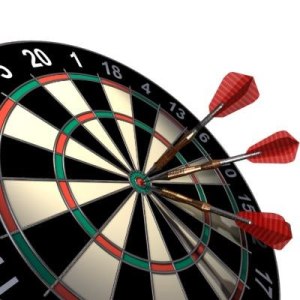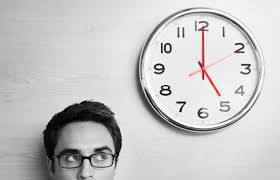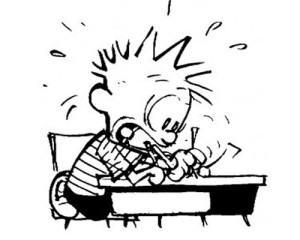In the “A” level Economics exam, at least half of the questions are guaranteed to be an “evaluation” type of question. Examples of such questions include those that begin with “Discuss”, “To what extent” and “Evaluate” etc.
Such questions are most usually found as:
- The 2nd half of a 2-part essay question.
- A 25-mark essay question.
- One of the last few question(s) in each Case Study.
From my experience as a JC Economics tutor, students tend to find such “evaluation” types of questions challenging, if not difficult to answer well. This shouldn’t be surprising, because such questions are meant to function as the main differentiating factor between an “A” and a “B” student.
My purpose for writing this article however, is to point out that contrary to how students tend to think that such questions require “creativity” to answer, in fact the best way to tackle such questions is to frame them in a particular thought structure.
In particular, in all my years teaching Economics as a freelance tutor, I have found 4 ways that you can tackle evaluation type of questions like a pro.
What is an evaluation?
Let’s begin first by understanding what is an evaluation. An evaluation is in fact a judgement.
In my experience, there tends to be 3 main types of subjects in an Economics exam essay question that can be evaluated:
- Economic policy – e.g. Monetary/Fiscal policy or tax/subsidy/legislation.
- Economic theory or hypothesis – e.g. Price elasticity concepts, assertions that monopolies are the best market structure.
- Impact of a change to the Economy – e.g. impact of a demand/supply shock, reduction in income or legislation.
While all 3 types of evaluation subjects are evidently unrelated to each other for most part, let me show you that the following 4 methods of evaluations can be applied across all of them easily.
1. Short and Long Run effects.
Time is a major factor in many evaluations or appraisals to various situations.
For most part, any analysis applied to the short-run, tends to vary from that to the long-run, because in many cases, delayed effects tend to appear only after a certain amount of time has passed.
Here are some examples:
Economic policy:
A cut in national tax rates will lead to an increase in Aggregate Demand in the short-run, which will increase National Income and the material standard of living. But, it will also reduce government revenues, which will decrease government social spending. In the long-run therefore, non-material standard of living will drop.
Economic theory or hypothesis:
Monopolies tend to charge higher prices than socially desirable levels, which is disadvantageous to consumers in the short-run. In the long-run however, by virtue of long-term super-normal profits, monopolies can engage in R&D and produce high quality products which are socially desirable.
Impact of a change to the Economy:
The increase in oil prices will leads to a short-run increase in revenue for oil-exporting countries. Eventually, oil-importing countries will develop alternative energy and reduce their import of oil. This will reduce the revenue for oil-exporting countries in the long-run.
2. Small vs Large impact.
Other times, we may evaluate that certain effects or impacts, can be diminished or amplified with some analysis.
Let’s again try some examples with such flavour:
Economic policy:
A cut in national tax rates will lead to an increase in Aggregate Demand in theory as consumers will increase their consumption levels due to an increase in disposable income. However, in the case of a small and open economy, the relatively small size of the domestic economy will mean that the increase in disposable income is more likely to fuel an increase in import expenditure, compared with that of domestic consumption. On the whole, Aggregate Demand may actually be reduced, thus causing National Income to contract instead of expanding in theory, as the negative impact of the increase import expenditure outweighs the positive impact of an increased domestic consumption.
Economic theory or hypothesis:
Monopolies tend to charge higher prices than socially desirable levels, which is disadvantageous to consumers as their consumer surplus is reduced. However in the case of natural monopolies, the large potential economies of scale can only be achieved with a very small number of firms in the market, if not only one. In such cases, the monopoly can experience great enough cost savings such that they can pass on positive cost savings to consumers, that outweighs the negative effect of the monopolies’ higher profit-maximising price.
Impact of a change to the Economy:
The increase in oil prices will leads to a short-run increase in revenue for oil-exporting countries. Eventually, oil-importing countries will develop alternative energy and eventually reduce their import of oil. The negative reduction in revenue associated with the eventual decrease in quantity of oil sold may outweigh the positive increase in revenue associated with the negative increase in price of oil over the long-run.
3. Good or bad?
Probably one of the more familiar and straightforward way to evaluate, discussing whether the situation is good or bad is usually a fool-proof way of showing examiners your ability in higher-order analysis.
As you might have noticed, the good/bad line of argument is also highly compatible with the other types of evaluation. In fact, we can reuse the above examples:
Economic policy:
A cut in national tax rates will lead to an increase in Aggregate Demand in theory as consumers will increase their consumption levels due to an increase in disposable income. However, in the case of a small and open economy, the relatively small size of the domestic economy will mean that the increase in disposable income is more likely to fuel an increase in import expenditure, compared with that of domestic consumption. On the whole, Aggregate Demand may actually be reduced, thus causing National Income to contract instead of expanding in theory, as the negative impact of the increase import expenditure outweighs the positive impact of an increased domestic consumption..
Economic theory or hypothesis:
Monopolies tend to charge higher prices than socially desirable levels, which is disadvantageous to consumers as their consumer surplus is reduced. However in the case of natural monopolies, the large potential economies of scale can only be achieved with a very small number of firms in the market, if not only one. In such cases, the monopoly can experience great enough cost savings such that they can pass on positive cost savings to consumers, that outweighs the negative effect of the monopolies’ higher profit-maximising price.
Impact of a change to the Economy:
The increase in oil prices will leads to a short-run increase in revenue for oil-exporting countries. Eventually, oil-importing countries will develop alternative energy and eventually reduce their import of oil. The negative reduction in revenue associated with the eventual decrease in quantity of oil sold may outweigh the positive increase in revenue associated with the negative increase in price of oil over the long-run.
4. Who is affected?
This is my favourite evaluation type because it is seldom utilised by students (thus making your essay stand out), and also because it can actually be applied almost universally.
The “who is affected” type of evaluation stems from the fact that in most cases, different groups of economic agents will feel the effects differently. Let’s have a look at the following examples:
Economic policy:
A cut in national tax rates has immediate positive impacts on firms and consumers as the tax burden is reduced. However the tax revenue for the government will be reduced, worsening the fiscal deficit.
Economic theory or hypothesis:
Monopolies tend to charge higher prices than the marginal cost of production. Thus monopolies tend to earn super-normal profits indefinitely, which benefits shareholders of these companies, at the expense of customers.
Impact of a change to the Economy:
The increase in oil prices will leads to a short-run increase in revenue for oil-exporting countries, and a corresponding increase in expenditure for oil-importing countries.
Evaluations are cool – but always have a stand!
So as you can see, evaluation-type questions are best tackled using a specific set of tools, within which your inner creativity can be unleashed. Not framing your thoughts properly runs the risk of over-thinking during exams and ensuing confusion – hardly the best scenario for your exams.
It is important to note however that your essay needs a stand.
In many cases, students neglect stating their stand in their essay, leading to an essay that makes for confusing reading. Having a stand will also enable better framing of your thoughts as well – all the more reason to write a stand clearly at the beginning of your essay (in the introduction).
Lend your support!
I hope that you have enjoyed reading this article of mine. I am giving my time to sharing my knowledge and every bit of support means a lot to me! Do drop me a comment or share this article on social media with your friends.
To find out more about my services as a JC Economics tutor, visit my website here.







1 thought on “Evaluation In An Economics Essay – 4 Pro Tips”